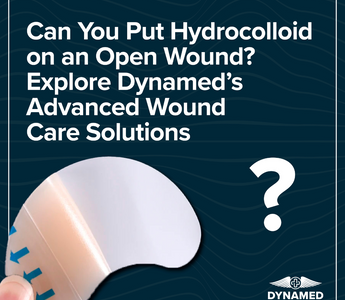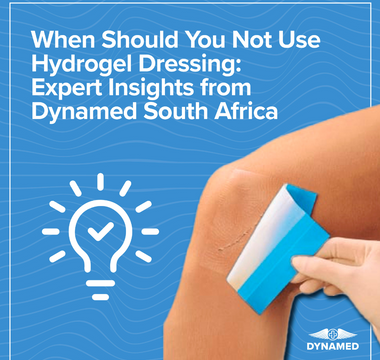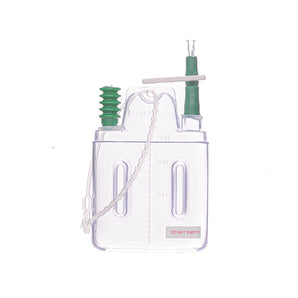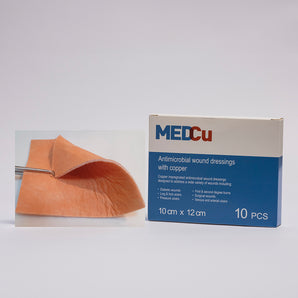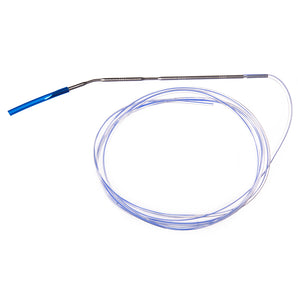As we navigate the complexities of wound care, one question often arises: can hydrocolloid dressings be applied to open wounds? These dressings have become an essential tool in advanced wound management, known for creating a moist environment that aids healing. In South Africa, where surgical innovation and effective wound healing are paramount, understanding the appropriate use of hydrocolloid dressings is crucial.
Hydrocolloid dressings transform into a gel upon contact with wound exudate, maintaining a moist microenvironment. This feature not only supports healing but also acts as a barrier against bacteria and contaminants, reducing infection risks. Their ability to manage exudate while providing cushioning makes them a reliable choice for various wound types, including pressure ulcers and post-surgical wounds.
However, the question of their suitability for open wounds remains. By exploring their benefits and limitations, we can make informed decisions that enhance recovery and promote overall health.
Key Takeaways
-
Hydrocolloid Dressings' Benefits: Hydrocolloid dressings provide a moist environment that promotes faster healing and acts as a barrier against bacteria and contaminants, making them effective for wounds like pressure ulcers and post-surgical wounds.
-
Application Suitability: While these dressings are primarily used for certain wound types, their suitability for open wounds depends on wound evaluation and clinical judgement, as they can maintain a sterile and moist healing environment.
-
Care & Application Tips: Proper application involves cleaning the wound, choosing the correct size dressing, and regular monitoring to prevent infection. It's crucial to follow application guidelines to maximise the benefits.
-
Diverse Wound Care Options: Alongside hydrocolloids, alternatives like hydrogel, foam, alginate, silver, and antimicrobial dressings provide tailored solutions for specific wound needs, expanding treatment options.
-
Dynamed's Expertise: Dynamed, a leading manufacturer based in South Africa, offers a range of advanced wound care products, integrating innovation and quality to support effective healing and patient care.
- Infection Prevention & Longevity: These dressings enhance healing while reducing the frequency of dressing changes, offering convenience and better protection against infections during the recovery process.
At Dynamed, based in South Africa, we pride ourselves on being the go-to manufacturer for both basic and advanced wound care products. Our extensive range includes medical devices, consumables, and pharmaceuticals, all designed to meet the highest standards. But why are these products so crucial? Let's explore their significance.
Understanding Hydrocolloids
Wounds, whether small cuts or larger injuries, need proper care to ensure quick and infection-free healing. Our advanced wound care products play a vital role in creating an optimal healing environment. They protect against infections and help wounds recover faster. But what's the magic behind our products?
Our Range of Products
-
Hydrocolloid Dressings: These create a moist environment vital for effective healing. Our dressings are impermeable to water and bacteria, making them ideal for pressure ulcers and post-surgical wounds.
-
Silver Dressings for Wound Care: Silver has well-known antimicrobial properties. Our silver dressings combat infections, providing a cleaner and safer healing process.
-
Hydrogel Wound Dressings: Perfect for dehydrated wounds, they provide necessary moisture, helping the skin heal without causing further damage.
- Antimicrobial Wound Dressings: These are designed to actively fight bacteria, reducing infection risks considerably.
Insights & Tips for Using Our Products
Step-by-Step Tutorial: How to Apply a Hydrocolloid Dressing
-
Clean the Wound: Before anything else, ensure the wound is clean. Wash with mild soap and water.
-
Prepare the Dressing: Choose the appropriate size of hydrocolloid dressing. If needed, cut it to fit the wound area.
-
Apply the Dressing: Place the dressing over the wound without stretching it. Press gently to secure it in place.
-
Monitor the Wound: Check periodically for any signs of infection like redness or discharge. Our dressings can remain in place for several days if required.
- Always ensure hands are clean before dressing or checking on a wound.
- Replace a dressing immediately if it becomes saturated or starts to peel off.
- In case of any adverse reactions, consult a healthcare professional promptly.
Why Choose Dynamed?
But why choose our products over others? At Dynamed, we're not just about selling products. We genuinely care about improving patient outcomes. With our expert team and state-of-the-art manufacturing, we provide products that truly make a difference in patients' lives. Our stringent quality checks ensure reliability and safety, so you can trust us with your wound care needs. Plus, local manufacturing in South Africa supports our economy and reduces product lead times for quicker delivery.
Uses Of Hydrocolloid Dressings
Hydrocolloid dressings serve as a versatile solution in advanced wound care, especially in maintaining moist conditions essential for proper healing. They find use in various scenarios, making them indispensable in any wound care toolkit.
Common Applications
Hydrocolloid dressings, including those from Dynamed, are effective for managing different types of wounds. They're commonly used for pressure ulcers, where their cushioning effect reduces pain and aids in recovery. They're also ideal for post-surgical wounds and superficial skin injuries, as these dressings transform into a gel upon contact with wound exudate, holding moisture and providing a sterile environment that inhibits bacterial growth.
Benefits For Wound Healing
These dressings offer several benefits enhancing healing. They create a shield against bacteria and contaminants, significantly minimising infection risks. The gel-like structure forms a protective layer that acts as a barrier, ensuring a sterile site. Furthermore, hydrocolloid dressings are waterproof, allowing individuals to shower without needing to change them frequently. This long-lasting nature reduces the need for regular dressing changes, maintaining a stable healing environment and providing the patient with the comfort to carry on with daily activities without disruptions.
In the realm of wound care, finding reliable solutions is paramount for effective healing. Dynamed stands out as South Africa's premier manufacturer, expertly crafting basic and advanced wound care products. But what sets them apart? Let's journey through their diverse offerings and explore how Dynamed transforms the wound care landscape.
Considerations For Open Wounds
Advanced wound care is more than just a bandage. It encompasses sophisticated products designed to create optimal healing environments. Hydrocolloid, hydrogel, and silver dressings are pivotal in promoting faster recovery. They keep wounds moist, reduce bacterial growth, and protect against infections. Plus, these dressings require less frequent changing, providing convenience for users.
The Role of Hydrocolloid Dressings
Hydrocolloid wound dressings are a game-changer. Upon contact with fluid, they form a gel that maintains moisture and shields against bacteria. Suitable for pressure ulcers and post-surgical wounds, they speed up the healing process. These dressings even adhere to challenging areas, ensuring comprehensive coverage.
Exploring the Product Range
Dynamed offers an extensive range of wound care products tailored to diverse needs. Whether it's a simple abrasion or a complex venous ulcer, there's something in their product line to suit. Their commitment to quality is unmatched, reflected in each meticulously developed dressing. And these products are proudly locally manufactured, supporting the South African economy.
Silver and Antimicrobial Dressings
Why consider silver dressings? These unique products incorporate antimicrobial properties that combat infection risks. Ideal for wounds with high infection potential, such as post-surgical sites or traumatic injuries. Antimicrobial medications lessen bacteria, facilitating a healthier healing environment. Ever wondered how a dressing can fight bacteria? Here's your answer.
How to Apply a Hydrocolloid Dressing
Got a wound but unsure how to apply your dressing? Here’s a quick guide:
-
Clean the Wound: Start by gently cleaning the wound with sterile water or saline. Pat dry with care.
-
Select the Dressing: Choose a dressing slightly larger than the wound area for optimal coverage.
-
Apply Carefully: Remove the backing from the dressing and place it directly over the wound.
- Press Firmly: Ensure the edges are securely attached to the skin, preventing any gaps where bacteria might sneak in.
Insights & Tips
-
Regular monitoring: Check the wound and dressing regularly to spot any signs of infection.
-
Change as Needed: Although these dressings last longer, change them if they become excessively saturated.
- Avoid Excessive Movement: Try to limit movement in the affected area, helping the dressing stay put.
Dynamed's approach to wound care seamlessly integrates innovation with practical application. By providing high-quality medical devices and pharmaceuticals, they contribute significantly to patient recovery and health care excellence. Interested in transforming wound care experiences with our products? Visit Dynamed.
Sure! Here's an optimized section on how to apply hydrocolloid dressings:
How To Apply Hydrocolloid Dressings
Hydrocolloid dressings provide an effective solution in advanced wound care. They're great for various wound types like pressure ulcers or post-surgical wounds. But how do you apply them correctly?
Step-By-Step Guide
-
Clean the Wound: Start with gentle cleaning. Use saline solution or soapy water. Pat the area dry with a sterile cloth to prepare for dressing application.
-
Select the Right Size: Choose a dressing that covers the wound, extending an inch beyond the wound's edges.
-
Apply the Dressing: Gently peel away half of the backing, position the sticky side on the wound, and avoid stretching the dressing. Smooth down the edges to ensure it adheres well.
- Secure Edges: For better hold, press around the edges firmly. If necessary, use a medical adhesive or tape to keep it in place.
When to Change the Dressing
In advanced wound care, monitoring is crucial. Check the dressing every few days. Typically, change it every three to seven days, or sooner if it leaks or the gel appears expanded. Observe for signs of infection like increased redness or foul odour. If any is present, consult a medical professional immediately.
With precision and care, our hydrocolloid wound dressings can significantly improve healing outcomes. They're a testament to the quality and innovation in Dynamed's range of wound care products.
Alternatives To Hydrocolloid Dressings
Hydrocolloid dressings play an essential role in wound care by creating a moist environment conducive to healing. However, there are other dressing options that might better suit specific wound types or patient needs. Let's explore the alternatives.
-
Hydrogel Dressings: Best suited for dry wounds, hydrogel dressings maintain moisture and facilitate autolytic debridement, which can gently clean wounds. These are perfect for necrotic wounds or those with minimal exudate.
-
Foam Dressings: Ideal for wounds with moderate to heavy exudate, foam dressings absorb excess fluid while cushioning and protecting the wound. Their breathable nature supports healing without drying out the wound bed.
-
Alginate Dressings: Made from natural seaweed, these transform into a gel on contact with wound exudate, making them effective for heavily exuding wounds. They offer a biodegradable option that adapts to wound contours.
-
Silver Dressings: For wounds at high risk of infection, silver dressings incorporate antimicrobial properties that reduce bacterial colonisation. They are particularly useful in managing infected wounds or those prone to becoming infected.
-
Antimicrobial Dressings: These dressings contain agents to combat bacteria, fungi, and other microorganisms. They're ideal in managing wounds with high risks of contamination.
- Transparent Film Dressings: These maintain a moist environment and allow visualization of the wound. Suitable for superficial wounds with minimal drainage, they're easy to apply and remove.
Utilising a variety of dressings such as those mentioned above expands the options for effective wound management and aligns with best practices in care. Each dressing provides unique properties that make them suitable for particular wounds, enhancing outcomes significantly.
This section is crafted to seamlessly follow the article's previous focus on hydrocolloid dressings, expanding on alternatives while ensuring the topic remains relevant and informative to the audience.
Conclusion
Hydrocolloid dressings play a vital role in modern wound care by providing a moist and protective environment that promotes healing. Their versatility makes them suitable for various wound types and conditions. As we've seen, these dressings offer significant advantages, such as reducing the frequency of dressing changes and shielding wounds from bacteria.
Incorporating products like those from Dynamed into our wound care regimen ensures we're using high-quality, locally manufactured solutions that support both patient recovery and the South African economy. By understanding and utilising the different dressing options available, we can tailor our approach to meet specific wound care needs, ultimately enhancing patient outcomes.
Frequently Asked Questions
What are hydrocolloid dressings used for?
Hydrocolloid dressings are used for managing various wound types, including pressure ulcers, post-surgical wounds, and superficial skin injuries. They create a moist environment that aids healing and provide a protective barrier against bacteria, making them highly effective in promoting faster recovery.
How do hydrocolloid dressings work?
Upon contact with wound exudate, hydrocolloid dressings transform into a gel, maintaining moisture and creating a sterile environment. This process helps to inhibit bacterial growth and supports the healing of a wide range of wounds efficiently.
What should I consider when selecting a hydrocolloid dressing?
When selecting a hydrocolloid dressing, consider the wound size, location, and exudate levels. The dressing should adequately cover the wound without overlapping onto healthy skin. Additionally, consider the dressing's ability to maintain a moist environment to support optimal healing conditions.
How often should hydrocolloid dressings be changed?
Hydrocolloid dressings typically require changing every three to seven days. It's important to check the dressing regularly, at least every few days, and change it sooner if there are signs of infection, such as increased redness, swelling, or a foul odour.
Are there specific benefits of using Dynamed's hydrocolloid dressings?
Yes, Dynamed's hydrocolloid dressings are designed to promote optimal healing, shield against bacteria, and reduce the need for frequent changes due to their long-lasting properties. Their locally manufactured range supports the South African economy while ensuring high-quality wound care solutions.
What are the alternatives to hydrocolloid dressings?
Alternative dressings include hydrogel dressings for dry wounds, foam dressings for moderate to heavy exudate, alginate dressings for heavily exuding wounds, silver dressings for high-risk infections, antimicrobial dressings for contaminated wounds, and transparent film dressings for superficial wounds. Each type caters to specific wound needs and conditions.
When should I seek medical advice regarding wound care?
Seek medical advice if the wound shows signs of infection, such as increased pain, redness, swelling, or pus, or if it does not show signs of healing within a reasonable timeframe. Professional guidance ensures appropriate treatment and prevents complications.

